History and Features of the US Constitution: The United States Constitution contains the basic principles and Laws of the United States. This Article seeks to examine the United States Constitution in the light of it’s history and basic features. I trust by the end of this Article you will become abreast with the basic features and history of the United States Constitution.
Recommended: Advantages and Disadvantages of Judicial Precedence
History of the US Constiution
The U.S constitution was framed by the Philadelphia convention of 1789 and inaugurated two years later after it served as a unifying force for the diverse population in the United States.
The Constitution sprung from the efforts to reform the Articles of Confederation; an earlier Constitution in U.S which guaranteed the principles of Confederation by providing for a loose alliance of States with a weak Central Government.
From May 1787 through to September 1787, delegates from States in USA convened in Philadelphia where they wrote a New Constitution. Delegates to this Constitutional convention devised a plan for a Federal State with a strong Federal Government and three branches: The Executive, Legislature, and Judiciary whose activities will be checkmated through a system of Checks and balances to ensure that no Branch acts outside its defined Constitutional powers.
This New Constitution was submitted to the Congress of the Confederation in September 1787 who approved it’s forwarding to States each of which were to hold a Ratification Convention. Upon the success of the ratification convention in 1789 the Constitution of the United States came into force, and Since 1789 till date the Constitution has been in force.
Also see: Arms of a democratic government
Features of the US Constitution
The U.S Constitution has the following features:
1. It is Written: The United States Constitution is a Written constitution meaning that the Fundamental principles and laws of the United States State are contained in a single Legal document known as the U.S Constitution.
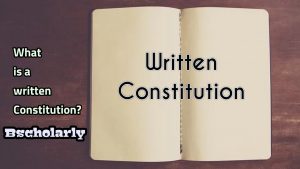
2. Federalism: The United States Constitution has a federal character as it imbibes the principles of federalism by constitutionally dividing Governmental powers between the center and other federating units.
The Constitution also imbibes other federal principles such as Separation of powers, and Checks and Balances.
3. Separation of Power: The powers of the three organs of Government in USA are distinctively stated and provided for in Article i, ii, and iii of the United States Constitution for the Legislature, Executive and Judiciary respectively. Hence, Separation of Power is a basic feature of the United States Constitution.
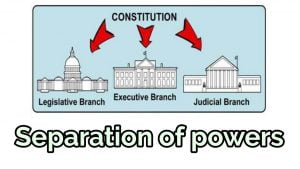
Also see: Characteristics of human rights
4. It is Supreme: A major feature of the United States Constitution is its supremacy. The United States Constitution is supreme, and every other Law inconsistent with the provisions of the Constitution; by virtue of its inconsistency is therefore void.
5. It is Rigid: The United States Constitution is a Rigid. This means that the United States Constitution cannot be easily amended nor repealed.
For the Constitution of the United States to be amended, you have to successfully undergo strenuous Legal and Constitutional obstacles for it’s amendment.
6. Bi-Cameral Legislature: Article 1, Section 1 of the United States Constitution establishes the U.S Congress, which is the legislative house in United States consisting of the Upper and Lower house known as the Senate and the House of Representatives. Hence, making United States a state with a Bi-cameral legislature.
Recommended: Advantages and Disadvantages of a written constitution
7. Freedom of Association: The United States Constitution guarantees the Right to freedom of Association including the Right of citizens to choose their religious belief and avoid any discrimination on the grounds of their religion. The Constitution further establishes USA as a secular state based on equality of all religion.

8. It upholds the tenets of democracy: Democracy is a system of Government by the whole population of people through elected Representatives. The U.S Constitution upholds this tenet of Representative democracy; providing for the Right of Citizens to vote and be voted, hold periodic elections, and join Political parties.
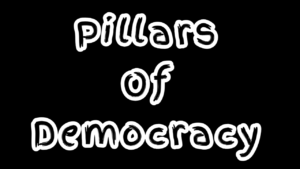
9. Fundamental Human Rights: The U.S Constitution upholds the tenets of Human Rights as it provides for the basic rights of its citizen which includes the Right to Freedom of Speech, Association, Expression, Privacy, Liberty, Religion, Equal protection, Property, Non-discrimination, and the Right to Life.
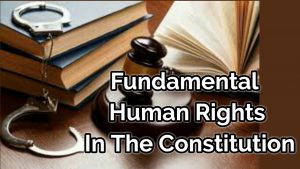
10. Dual Citizenship: The 14th amendment Act to the U.S Constitution provides for dual citizenship in U.S. Thus, a person may be a citizen of U.S and Nigeria at the same time. The constitution also states how citizenship may be acquired.
11. Checks and Balances: Checks and Balance is a major feature of the United States Constitution, which implements this doctrine of ‘Checks and Balance’ to ensure equilibrium in the discharge of Governmental functions amongst the various organs of Government, prevent arbitrary rule and the abuse of Powers.
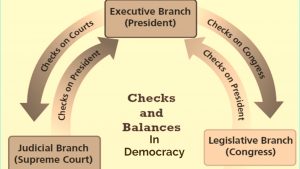
Trust this Article was helpful? Stay glued to this blog for more informative Articles. Meanwhile, I also recommend that you watch the YouTube video below for more significant features of the United States Constitution.

Edeh Samuel Chukwuemeka, ACMC, is a lawyer and a certified mediator/conciliator in Nigeria. He is also a developer with knowledge in various programming languages. Samuel is determined to leverage his skills in technology, SEO, and legal practice to revolutionize the legal profession worldwide by creating web and mobile applications that simplify legal research. Sam is also passionate about educating and providing valuable information to people.